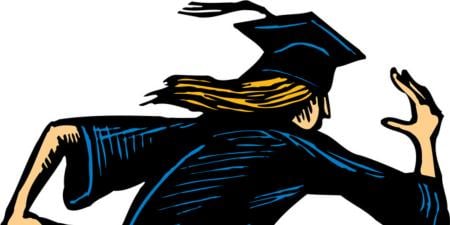Charity in the broad spiritual sense, the desire to relieve suffering…is the most precious possession of medicine.
Dr. Edward Churchill, 1947
Chiseled into the stone in the lobby
of the Massachusetts General Hospital.
In 1965, early in my senior year at Harvard College, I applied to Harvard Medical School. One of the toughest questions on the form was “Give a brief candid description of your personality.” I sweated over this for days, crafting every word. Having taken all the pre-med courses, I was also a major in “social relations,” which was categorized as “from society to mice.” I had started in psychology, but by that time I had made my way not quite to mice, but to cats: I was writing a senior thesis on the biological basis of learning and memory, going deeper down the reductive rabbit hole of science to the molecular level, looking at what biochemical changes had to occur at the synaptic junction in order to facilitate transmission—doing experiments on cats.
I was called for an interview. I had heard horrific stories about the main interviewer, Dr. Funkenstein—a psychiatrist who was known for “stress tests,” finding monstrous ways to intimidate the applicant, from total fluster to psychotic rage. One trick was to ask the applicant to open the window, which was nailed shut; another, to leave you alone in his office and have the phone ring, to see if you’d pick it up, or not—either choice was very bad. When I got there, alert for every move, he startled me with, “Who do you admire most, Einstein or Churchill?” I tried to stall, said I didn’t know. No luck. I took a shot: “Churchill.” He said, in a derisive voice: “Well, you know that Harvard Med is known for its science, not for social conscience—maybe you shouldn’t apply here?” The rest of the interview is a blank. Later, a friend who had answered “Einstein” said that “Dr. Frankenstein” had sneered and said, “Well, you know that Harvard Med is known for its social conscience, not its science—maybe you shouldn’t apply here.”
I did apply, was accepted, but delayed enrolling to go to Oxford as a Rhodes scholar. I started on the memory research—teaching cockroaches to lift their legs—but gave it up and began writing. Three years later, my choice was Vietnam or Harvard Med. I had to reapply, and came to the same “brief candid description of your personality.” With a bottle of Johnnie Walker at my side, I typed: “S.J. Bergman is helpful friendly courteous kind obedient cheerful thrifty brave clean and reverent.” The Boy Scout Oath. Accepted.
Has the issue of how we choose doctors changed in recent generations?
Well, I hope we have moved on from the Frankensteins. The good news of the new generations: they are astonishing in their diversity, their worldview—so many have been all over the world, so that foreigners are no longer foreign, strangers not strange—they have done remarkable things in both science and society, they are so much less parochial and so much more culturally “mature” than my generation. The new majority of women doctors has brought astonishing changes: women are known as the carriers in our culture of care-taking, relationality, and empathic concern—these have had tremendous effects on our profession. Despite that, the new generation of applicants are kind of “super-achievers”—often stressed-out for the past 20 years in the unhappy “pursuit of happiness,” and often focused on the achievements of their own selves in our competitive society, the most self-centered society in the world. They have been on a narrow-railed conveyer belt of ambition and achievement. This brings a certain kind of competence, but at a price: a certain loss of the ability to engage in mutual, healing relationships. The “pursuit” may mar the “happiness.”
And that’s the bad news: this generation is the first “screen” generation: they grew up working at and communicating through computers and other electronic devices. There is evidence, now, of the effects of this on being able to do the most important thing any doctor does: to engage fully in mutual, healing, relationships.
It is not a matter of whether we are emphasizing scientific ability or social expertise. It is not a question of “character.” Character is a focus on “self.” For instance, we say that he or she is a “powerful” person—as if power resides in the self. The “relational model” that my wife Janet Surrey and I have written about (We Have to Talk: Healing Dialogues Between Women and Men) suggests that the main measure of psychological health resides not in parameters of the “self,” but rather in the quality of a person’s relationships. The key question is whether the quality of connection is “self-serving” or “mutually-serving” and empathic.
In this model, the “power” of a person does not reside within the isolated person—which often becomes “power-over” someone else. Rather it resides in “power-with.” For example, when two people meet—say for lunch—and have a great relational connection, both of the people come away feeling five good things: more zest or energy, more self-worth and sense of the worth of the other, more knowledge of self and other, a desire for more connection (“let’s do this again!”), and more empowerment to take action in the world. This enhanced power did not exist in each of them before the lunch meeting. Rather than the power being a quantity in each person, the power co-arises in the connecting. In the process of meeting, empowering takes place, of both participants. Think of a good relationship, say with a partner or spouse. When you are in a good connection, you can talk about anything; when you are in a bad disconnect, you can’t talk about anything. The crucial and first question is: what is the quality of the connection?
And what does this have to do with the new generation of doctors?
Again, the issue isn’t whether a young doctor-to-be is a scientist or a social or community activist. That is an issue of the “character” of the self, and it is not the central issue. The central issue is the individual’s capacity to create and participate in good (i.e., mutual) connections with others. So, for example, an interviewer might ask questions like, “What relationships are important to you? How would you describe the qualities of these relationships? How do you understand empathy, compassion, suffering? How do you manifest these in yourself or in those around you—your family or your friends? Are you able to manifest it around sick people, even disgusting or hateful or ungrateful people? What has been your experience with illness, in you and loved ones or others?”
I have often thought that rather than ask, on the “patient history,” the question “How are you?” it might be more helpful to ask, “Can we talk about your suffering?”
Using the “we,” which always helps, with patients, to reframe the encounter as not “I” the doctor or “you” the patient, but rather the entity of the relationship that exists in the room, called the “we.” It is a shift from the “I/you” to the “we”; from the “either/or” of the scientific method to the “and”; from the “self/other” cultural paradigm to the “relationship” or the connection. I suggest to medical students and doctors that they simply try that experiment, using the word “we” as in “Can we talk about your (x)?” Or a surgeon might say, “We’ve done the tests; we have to talk about whether or not to have the operation.” What one inevitably finds is that by using the word “we,” you concretize the partnership, so that the patient starts to use the word “we” back at you. It announces and confirms: “There’s a relationship here.” And a good patient-doctor partnership is a key to good treatment, as well as to lessening the threat of litigation.
A new epidemic has arisen in college students. From 2005 to the present the incidence of death from binge drinking on campus has gone up almost ten times: now, 2,000 college students per year (5 per day) die just of alcohol poisoning—not counting the deaths from car crashes of other accidents (which brings the total to over 8,000). Why? No one knows for sure, but some of us think that it comes from the effects of being this “screen” generation. They have not had much practice in the face-to-face encounters of real relationships. When they get away from home and live in close proximity, especially to the other sex, they have a great deal of social anxiety and have to use booze (and drugs—especially “weed” and Ritalin) to handle the real meetings with others, especially across gender. Alcohol gives the illusion of connection, although in fact it disconnects you from real relationship. In AA, alcoholism is called “the disease of isolation.”
This brings up the more crucial issue in medicine—and in life: the risk of isolation and the healing power of good connection.
A major mission of Janet’s and my lives for the past decades has been our Off-Broadway play Bill W. and Dr. Bob, about the relationship between the two men that led to the founding of Alcoholics Anonymous in Akron, Ohio, in 1935, and of their wives, Lois and Anne, who founded Al Anon Family Groups. Writing it, we realized that there had to have been a doctor involved (Dr. Robert Smith, a surgeon from Akron, Dartmouth Class of 1902). Hearing from Bill Wilson, a drunk stockbroker from New York, that his doctor had told him alcoholism was a “disease,” Bob—a total alcoholic on the verge of dying—immediately said, “Then there must be a treatment.” What they discovered is a model for medicine—and for what we should look for in our applicants to be doctors. In Bill Wilson’s words to Dr. Bob when they first met: “I realized that I alone couldn’t stop drinking—and that the only thing that could keep me sober was telling my story to another drunk.” The essence of what works in AA is just that: understanding that no amount of self-will can keep you away from a drink; only asking for something outside yourself—another person, a divinity, a group, a “higher power”—can keep you sober. They went on to conceive of alcoholism as a disease with three elements—physical, psychological, and spiritual (not religious)—all of which had to be treated. This was the birth of the holistic movement in America in 1935.
The take-home message: what these two men discovered—the danger of isolation, and the healing power of good connection—is at the heart of all good medical care, in all three of those realms. And any good connection is mutual. As a medical student, if you have a good mentoring experience, you may think that you are the only one who is being helped, and even healed; in fact, the mentor is being helped, and even healed, just as much as you are.
Members of the younger generations are astonishingly accomplished—but often hindered by a focus of self-centered achievement and screen obsession and often less skilled in the give-and-take of forming, cultivating, and sustaining good mutual relationships. A horrific and expensive example (in terms of increased medical mistakes, both in diagnosis and treatment, leading to huge costs), is interviewing a patient with a computer screen between you, on a desk or in your lap or your hand. You make yourself a pretty dumb doctor, doing that. The good news is that there is an astonishing amount of information at your fingertips all the time and easily accessed—you don’t even have to remember or try to recall it; the real joy of medicine, and the hard thing to learn, is not information or knowledge, but understanding. And you never forget what you understand. Think of your very first patient—if you didn’t have a computer screen between you, you will recall, even 50 years later, every detail. If you did, you won’t recall all that much. All solid memories in humans (not roaches) are seared in, permanently, by the emotion during which they were laid down. My generation recalls where we were when we heard that JFK was shot; all of us recall the moment of 9/11.
Except in the case of the population of dedicated medical researchers who go to medical school with little interest in a daily life in the clinical arena, the focus of our applicants—and of our non-Frankenstein interviewers—needs to be on the quality of the connections in the applicants’ lives so far and the vision of that quality in their careers to come.
In my most recent novel, The Spirit of the Place, about a young doctor going home to join his aging mentor in family practice, the doctor comes to a point of decision and hears a kind of voice inside saying, “Don’t spread more suffering around. Whatever you do, don’t spread more suffering around.” All of us humans suffer—as the Buddha said, in the First Noble Truth, it’s not optional. The question in us and our patients is not the suffering, it’s how we walk through it. If we try to walk through it alone, stand tall, gut it out, stay distant from our patients, they and we will suffer more and spread more suffering around. And if we walk through suffering with others, with caring others—and that’s where we doctors come in, that’s our job, to “be with” people at crucial moments of suffering—we all have a chance to suffer less, to not spread more suffering around, to reach some understanding and awareness, and to heal.



